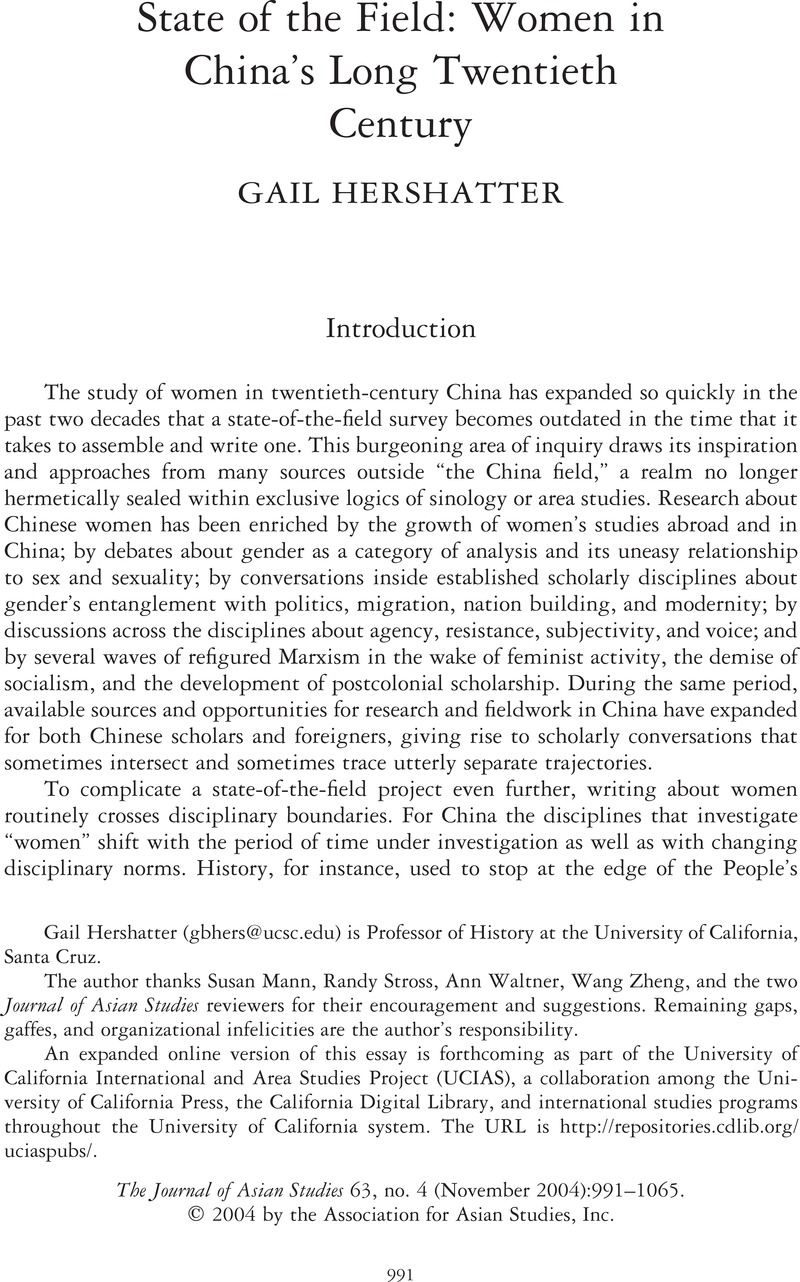Crossref Citations
This article has been cited by the following publications. This list is generated based on data provided by Crossref.
Welland, Sasha Su‐Ling
2006.
What Women Will Have Been: Reassessing Feminist Cultural Production in China: A Review Essay.
Signs: Journal of Women in Culture and Society,
Vol. 31,
Issue. 4,
p.
941.
2007.
Desiring China.
p.
1.
2007.
Desiring China.
p.
111.
2007.
Desiring China.
p.
31.
Remick, Elizabeth J.
2007.
Police-Run Brothels in Republican Kunming.
Modern China,
Vol. 33,
Issue. 4,
p.
423.
Wang, Sijun
Holloway, Betsy B.
Beatty, Sharon E.
and
Hill, William W.
2007.
Adolescent influence in family purchase decisions: An update and cross-national extension.
Journal of Business Research,
Vol. 60,
Issue. 11,
p.
1117.
2007.
Desiring China.
p.
65.
2007.
Desiring China.
p.
157.
2007.
Desiring China.
p.
205.
2007.
Desiring China.
p.
135.
2007.
Desiring China.
p.
85.
De Kloet, Jeroen
2008.
Gendering China Studies.
China Information,
Vol. 22,
Issue. 2,
p.
195.
Jiping Zuo
2008.
Marital Construction of Family Power Among Male-Out-Migrant Couples in a Chinese Village.
Journal of Family Issues,
Vol. 29,
Issue. 5,
p.
663.
Logan, John R.
and
Fainstein, Susan S.
2008.
Urban China in Transition.
p.
1.
Fan, C. Cindy
and
Regulska, Joanna
2008.
Urban China in Transition.
p.
89.
Kung, James Kai-sing
and
Lee, Daniel Yiu-fai
2010.
Women’s Contributions to the Household Economy in Pre-1949 China: Evidence from the Lower Yangzi Region.
Modern China,
Vol. 36,
Issue. 2,
p.
210.
Manning, Kimberley Ens
2010.
Embodied Activisms: The Case of the Mu Guiying Brigade.
The China Quarterly,
Vol. 204,
Issue. ,
p.
850.
Myerson, Rebecca
Hou, Yubo
Tang, Huizhen
Cheng, Ying
Wang, Yan
and
Ye, Zhuxuan
2010.
Home and Away: Chinese Migrant Workers between Two Worlds.
The Sociological Review,
Vol. 58,
Issue. 1,
p.
26.
Lin, Yi-min
2010.
Chinese Capitalisms.
p.
73.
Obukhova, Elena
Zuckerman, Ezra W.
and
Zhang, Jiayin
2011.
Why Was There No Fashion in Mao’s China? Effects of Politics on Culture in the Case of Chinese Naming Practices.
SSRN Electronic Journal,



